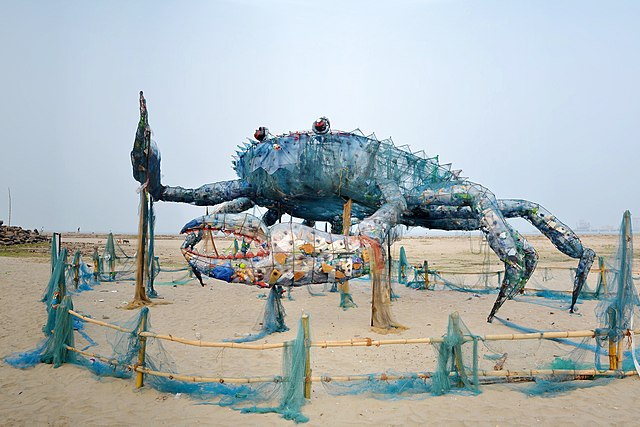Interactive art is a form of art that involves the spectator in a way that allows the art to achieve its purpose. Some interactive art installations achieve this by letting the observer walk through, over or around them; others ask the artist or the spectators to become part of the artwork in some way.
The Tunnel under the Atlantic (1995), Maurice Benayoun, Virtual Reality Interactive Installation, a video link between gallery visitors in Paris and Montreal
Music Room (1983), Jean-Robert Sedano and Solveig de Ory in Montpellier France
Boundary Functions (1998) interactive floor projection by Scott Snibbe at the NTT InterCommunication Center in Tokyo
Maurizio Bolognini, Collective Intelligence Machines series (CIMs, from 2000): interactive installations using the mobile phone network and participation technologies taken from e-democracy.
Installation art is an artistic genre of three-dimensional works that are often site-specific and designed to transform the perception of a space. Generally, the term is applied to interior spaces, whereas exterior interventions are often called public art, land art or art intervention; however, the boundaries between these terms overlap.
Rachel Whiteread, Embankment at Tate Modern, London
An installation art of Mad crab created with waste plastics and similar non-biodegradable wastes at Fort Kochi.
Visitors interact with a couple in bed, inside one of the many environments of La Menesunda (1965), one of the earliest large-scale installations in art history.
Allan McCollum.The Shapes Project, 2005/06








